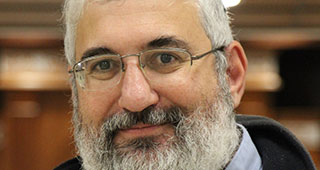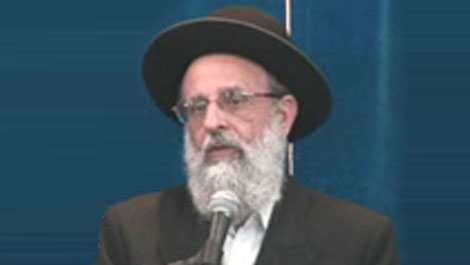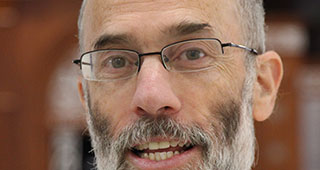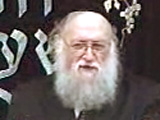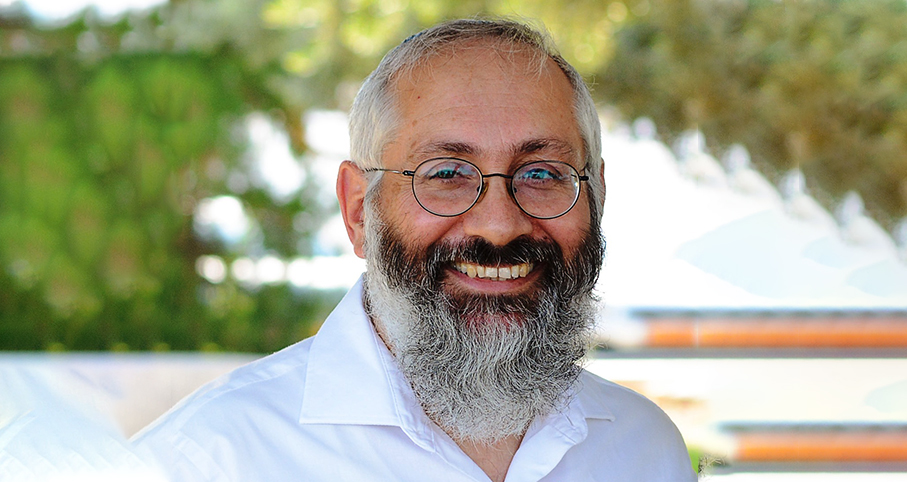Beit Midrash
- Sections
- Chemdat Yamim
- Bemare Habazak - Rabbis Questions
- Jewish Laws and Thoughts
- Jewish Laws and Customs
- Tzitzit & Tefillin
Answer: The gemara (Menachot 39a) posits that the "upper knot" of tzitzit is a Torah-level requirement, as we learn from the Torah’s connection between tzitzit and sha’atnez. Most Rishonim (see Beit Yosef, Orach Chayim 11; see China D’chayei 8, who cites dissenters) posit that a double knot is needed to connect the tzitzit to the garment, as we find that making a simple single knot is not a violation of Shabbat (Shabbat 74b).
There is also a machloket what the upper knot is – the part closer to the garment or further away from it (see Mishna Berura 11:66). A relatively strong consensus holds that it is the one further away from the garment, where it also secures the gedilim (section containing all of the string wrappings).

Bemare Habazak - Rabbis Questions (628)
Rabbi Daniel Mann
423 - P’sak Halacha during a Modern Pandemic – Interim View
424 - Do All Tzitzit Knots Need to be Double
425 - Removing Hair from a Necklace
Load More
Rava deduces from a halacha regarding a ripped string that one is supposed to make a knot between the chulyot (Menachot 38b). The gemara (ibid. 39a) deflects the proof by suggesting that knots were sometimes made but were not required. Many claim that while Chazal expected/preferred for there to be multiple chulyot and knots, basic Halacha only requires chulya with a minimum of three revolutions of a tzitzit string around the others (Mishna Berura 11:65).
The preference of more chulyot and/or knots is due to their being reminiscent of a variety of themes and numerical values. We will mention a few (the Mishna Berura 11:65 cites some): There should be seven knots in each tzitzit corresponding to the seven firmaments, but we leave out two knots when we do not have techeilet (Shut Radbaz 2333) because it is the techeilet that reminds of the sky. The gematria of tzitzit is 600, and when one adds eight strings and our present-day five knots, it comes to 613. 8+5 is also the gematria of echad. The five knots also remind us of the five books of the Torah. Since the five knots are doubled, it is also reminiscent of the ten sefirot (a Kabbalistic concept). None of these numerical significances are absolute requirements, as is true of the number of wrappings (Mishna Berura ibid.), but they are religious/spiritual preferences.
It is also possible that some of the gains of knots in between the chulyot do not depend on there being halachic knots. Single knots also are able to hold each chulya in place, take up some space, which is important (see Shulchan Aruch and Rama, OC 11:14), and make the different chulyot, with their significant number of revolutions, noticeable. The fact that a single knot is more secure than usual when it is in the midst of a g’dil that is surrounded by double knots might also give it prominence (see Maaseh Betzalel to Rikanati, Tzitzit 3). Again, despite this, the Shulchan Aruch at least recommends double knots each time.
There is another reason to want at least one of the middle knots to be a full halachic one. Sometimes the top knot starts getting looser, even to the point that it is no longer a halachic knot (see Living the Halachic Process IV, F-3). We are not usually overly concerned about this because the minimum requirements of the tzitzit are met when a minimal gedil is followed by a double knot. However, in your case, were the top knot to reach that point, there are no fallback knots after the beginning of the gedil.

Ask the Rabbi: Rubbing Cream on Someone who Accepted Shabbat
Rabbi Daniel Mann | Cheshvan 5786

Ask the Rabbi: Finishing to Eat but Continuing to Drink
Rabbi Daniel Mann | Iyar 5785

Ask the Rabbi: Erev Pesach That Falls on Shabbat
Rabbi Daniel Mann | Nisan 5785

Ask the Rabbi: Minyan or Tallit and Tefillin?
Rabbi Daniel Mann | Tammuz 5785

Rabbi Daniel Mann

Bikur Cholim by Electronic Means
Shvat 1 5782

Cooking for Shabbat at the End of Yom Tov
Iyar 20 5783

Ribbit in a Loan from an Irrevocable Trust Fund
Adar 7 5777

